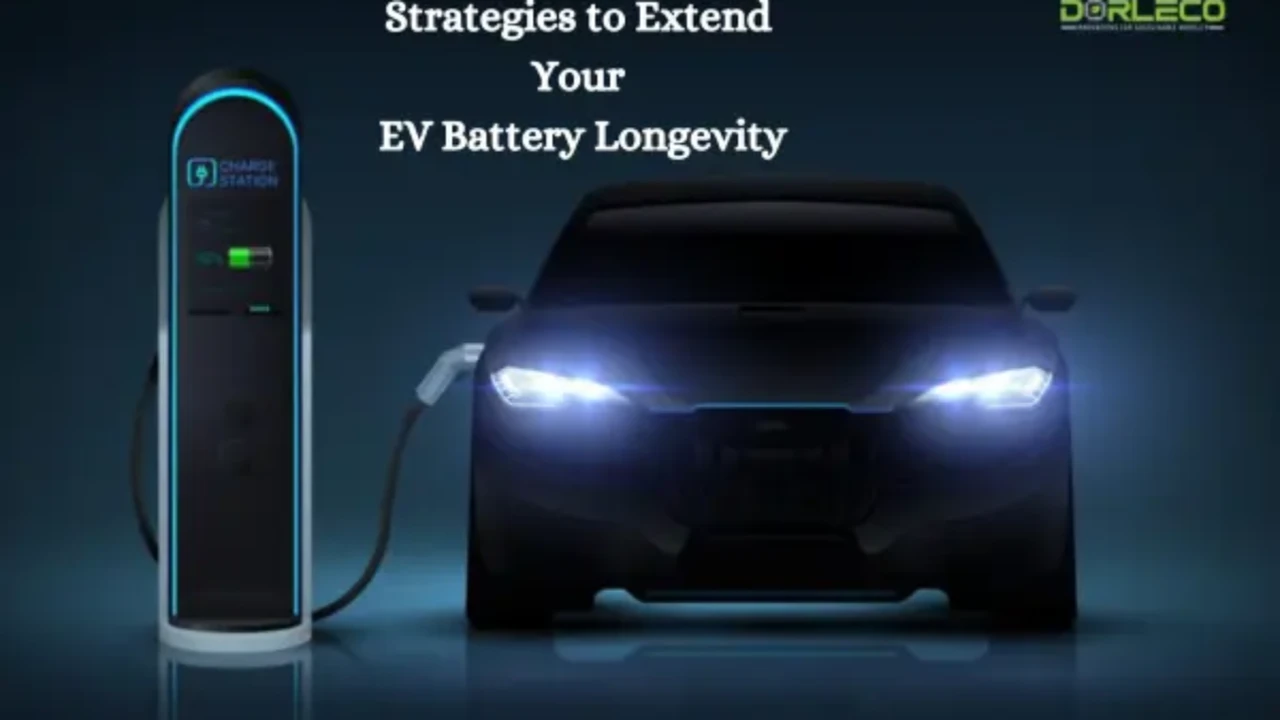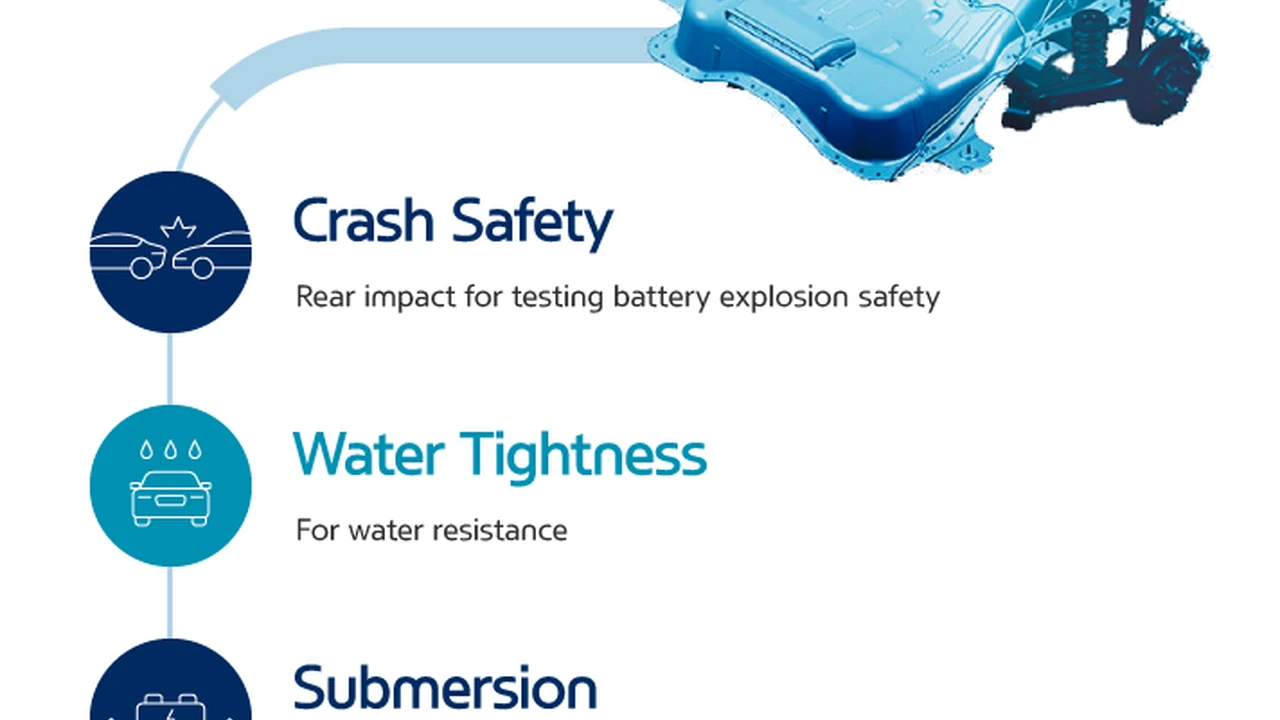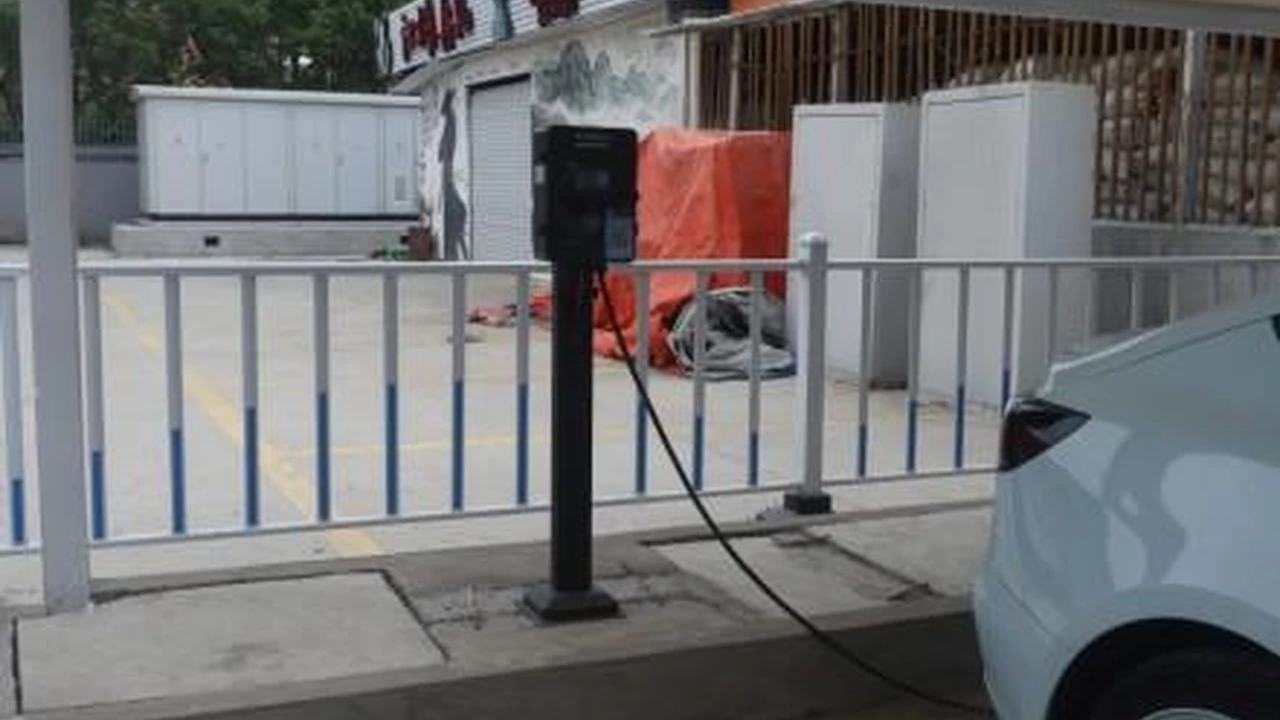EV Battery Charging Habits Impact on Longevity
How different charging habits can affect the long-term health of your electric vehicle battery.

EV Battery Charging Habits Impact on Longevity
Understanding Your EV Battery The Core of Your Electric Ride
Alright, let's talk about your electric vehicle's battery. It's not just a big power pack; it's the heart and soul of your EV, dictating everything from how far you can go to how much fun you have behind the wheel. Just like any heart, it needs a bit of care to keep ticking along nicely for years to come. We're talking about lithium-ion batteries here, the same tech that powers your smartphone, just on a much grander scale. These batteries are amazing, offering high energy density and a decent lifespan, but they're also a bit sensitive to how you treat them, especially when it comes to charging. Think of it like this: you wouldn't constantly sprint a marathon, right? Your battery feels the same way about certain charging habits. Understanding how these batteries work, their optimal operating conditions, and what stresses them out is key to maximizing their longevity and ensuring your EV remains a reliable companion for the long haul. We'll dive into the nitty-gritty of battery chemistry, thermal management, and how these factors play into the charging decisions you make every day.
The Golden Rules of EV Charging Maximizing Battery Health
So, what are the best practices for keeping your EV battery happy and healthy? It boils down to a few key principles that, when followed consistently, can significantly extend your battery's life. First off, avoid extreme states of charge. Constantly charging to 100% or letting it drop to 0% can put undue stress on the battery cells. Most manufacturers and battery experts recommend keeping your charge level between 20% and 80% for daily driving. This 'sweet spot' minimizes degradation and maintains the battery's chemical stability. Secondly, moderate your fast charging. While DC fast charging is incredibly convenient for road trips, it generates a lot of heat, which is the battery's arch-nemesis. Frequent fast charging, especially in hot weather, can accelerate degradation. It's best to reserve it for when you truly need it and rely on Level 2 (AC) charging for your everyday needs. Thirdly, avoid extreme temperatures. Parking your EV in direct sunlight on a scorching day or leaving it unplugged in freezing temperatures can impact battery health. Modern EVs have sophisticated thermal management systems, but giving them a helping hand by parking in the shade or keeping the car plugged in during cold snaps can make a difference. Lastly, don't let your EV sit for extended periods with a very low or very high charge. If you're going on a long vacation, aim to leave your car with around a 50% charge. These simple habits can collectively add years to your battery's effective lifespan, saving you money and hassle in the long run.
Deep Dive into Charging Levels Level 1, Level 2, and DC Fast Charging Explained
Let's break down the different charging levels you'll encounter, as each has its own impact on your battery. Understanding these can help you make informed decisions about when and how to charge.
Level 1 Charging The Slow and Steady Approach for EV Battery Longevity
Level 1 charging is essentially plugging your EV into a standard 120-volt household outlet. It's the slowest charging method, typically adding about 2-5 miles of range per hour. Think of it as a trickle charge. While it's slow, it's incredibly gentle on your battery. The low power output means minimal heat generation, which is excellent for long-term battery health. It's perfect for overnight charging if you don't drive a lot or for topping up at home. It requires no special equipment beyond the charging cable that comes with your car. For instance, if you own a Tesla Model 3 Standard Range Plus, plugging it into a Level 1 outlet overnight will comfortably replenish your daily commute's energy consumption without stressing the battery. It's the most accessible and often overlooked method for maintaining optimal battery health, especially for those with predictable, shorter daily driving patterns. The main downside is its speed, making it impractical for significant range replenishment in a short period.
Level 2 Charging The Everyday Workhorse for EV Owners
Level 2 charging uses a 240-volt outlet, similar to what your clothes dryer or electric stove uses. This is the most common type of home charging and public AC charging. It delivers significantly more power than Level 1, typically adding 20-30 miles of range per hour, depending on your EV and the charger's output. This is the sweet spot for daily charging for most EV owners. It's fast enough to fully charge your car overnight or during a workday, yet it's still relatively gentle on the battery compared to DC fast charging. The heat generated is manageable, and it allows the battery management system (BMS) to balance the cells effectively. For example, a Ford Mustang Mach-E owner with a 48-amp Level 2 charger at home can easily charge from 20% to 80% in a few hours. Many public charging stations, like those from ChargePoint or Electrify America (for AC charging), offer Level 2. Installing a Level 2 charger at home, such as the ChargePoint Home Flex (around $700-800, plus installation), is a highly recommended investment for any EV owner. It provides the perfect balance of speed and battery preservation.
DC Fast Charging The Road Trip Savior and Its Battery Impact
DC fast charging (also known as Level 3 or DCFC) is the quickest way to charge your EV, delivering direct current to the battery. This is what you'll use on long road trips to quickly add hundreds of miles of range in 20-40 minutes. Chargers can range from 50 kW to over 350 kW. While incredibly convenient, DC fast charging generates significant heat within the battery pack. This heat, especially if not properly managed by the EV's thermal system, can accelerate battery degradation over time. It's generally advised to use DC fast charging only when necessary, such as on long journeys, rather than for daily charging. For instance, a Hyundai Ioniq 5 can charge from 10% to 80% in about 18 minutes on a 350 kW charger, which is phenomenal for travel. However, consistently relying on this speed for your daily commute, especially if your battery is frequently pushed to its limits, can shorten its lifespan. Networks like Electrify America and EVgo offer extensive DC fast charging infrastructure. While the cost per kWh is higher than home charging (often $0.30-$0.50+ per kWh), the convenience on long trips is invaluable. The key takeaway here is moderation: use it when you need it, but don't abuse it.
Specific Products and Their Charging Recommendations for Optimal EV Battery Life
Let's look at some popular EV models and their specific charging recommendations, along with some popular home charging solutions.
Tesla Model 3 Standard Range Plus Charging Best Practices
The Tesla Model 3 Standard Range Plus is a fantastic entry-level EV. For daily use, Tesla recommends setting your charge limit to 80-90%. This helps preserve the battery's long-term health. For road trips, you can charge to 100% if needed, but try to drive it down soon after. Tesla's Supercharger network is incredibly convenient for fast charging, but for home, a Tesla Wall Connector (around $475, plus installation) is ideal. It offers up to 48 amps, providing excellent Level 2 charging speed. Many owners find that plugging in overnight, even for a few hours, keeps their battery in the optimal range without ever needing to fully deplete or fully charge it. The Tesla app also provides excellent insights into your charging habits and battery health.
Ford Mustang Mach-E Charging for Performance and Longevity
The Ford Mustang Mach-E, especially the Extended Range version, offers impressive range and performance. Ford recommends keeping the battery between 10% and 90% for daily driving. The Mach-E's battery management system is quite robust, but consistent fast charging above 80% can still lead to increased degradation over time. For home charging, the ChargePoint Home Flex is a popular choice, offering flexible amperage settings up to 50 amps. This allows you to tailor the charging speed to your needs, ensuring a gentle charge when time isn't critical. The Mach-E also has a 'Preferred Charge Times' feature, allowing you to schedule charging during off-peak hours, which can save money and often results in a slower, more battery-friendly charge.
Hyundai Ioniq 5 Charging for Ultra-Fast Capability and Battery Care
The Hyundai Ioniq 5 is renowned for its ultra-fast charging capabilities, thanks to its 800V architecture. While it can charge from 10% to 80% in under 20 minutes on a 350 kW charger, it's crucial to remember that this speed comes with a thermal load. For daily use, Hyundai, like other manufacturers, suggests keeping the charge between 20% and 80%. For home charging, a Level 2 charger like the Enel X Way JuiceBox 40 (around $600-700) is an excellent option. It provides ample power for overnight charging and smart features to schedule charging. While the Ioniq 5's battery is designed to handle fast charging, minimizing its use for routine top-ups will undoubtedly contribute to its longevity. The vehicle's preconditioning feature, which warms or cools the battery to an optimal temperature before fast charging, is also a great way to mitigate some of the stress.
Nissan Leaf Charging Considerations for LFP Batteries
The Nissan Leaf, particularly older models, uses a different battery chemistry (NMC) than some newer EVs, and some newer models might use LFP (Lithium Iron Phosphate) batteries. LFP batteries are generally more robust and can tolerate frequent 100% charging without significant degradation. If your Leaf has an LFP battery, charging to 100% regularly is less of a concern. However, if it's an older model with NMC, the 20-80% rule still applies. For home charging, a basic Level 2 charger like the ClipperCreek HCS-40 (around $500-600) is a reliable and durable choice. The Leaf also uses the CHAdeMO fast charging standard, which is less common in the US than CCS but still prevalent in some areas. While CHAdeMO is slower than newer CCS chargers, it still generates heat, so moderation is key.
Comparing Home Charging Solutions for Different Budgets and Needs
Choosing the right home charger is crucial for convenient and battery-friendly charging. Here are a few popular options:
Tesla Wall Connector The Integrated Solution for Tesla Owners
The Tesla Wall Connector is specifically designed for Tesla vehicles, offering seamless integration with the Tesla app and vehicle. It can deliver up to 48 amps, providing excellent charging speeds for all Tesla models. Its sleek design and robust build quality make it a top choice for Tesla owners. The cost is around $475, but remember to factor in professional installation, which can range from $200 to $1,000+ depending on your electrical panel and wiring needs. It's a premium product for a premium brand, ensuring optimal charging performance and battery care for your Tesla.
ChargePoint Home Flex The Versatile Smart Charger
The ChargePoint Home Flex is one of the most popular and highly-rated Level 2 chargers on the market. It's compatible with all EVs (using the J1772 connector, which is standard for non-Teslas, or with an adapter for Teslas). Its key feature is adjustable amperage, allowing you to set it from 16 amps up to 50 amps, making it suitable for various home electrical setups. It also boasts smart features like scheduling, energy tracking, and integration with the ChargePoint app. Priced around $700-800, it offers excellent value for its features and flexibility. This charger is ideal for households with multiple EVs or those who want precise control over their charging habits to optimize battery health.
Enel X Way JuiceBox 40 The Feature-Rich Smart Charger
The Enel X Way JuiceBox 40 is another excellent smart charger, offering 40 amps of power and a robust set of features. It's known for its reliable performance and user-friendly app, which provides detailed charging data, scheduling, and smart grid integration capabilities. It's compatible with all EVs and is priced similarly to the ChargePoint Home Flex, around $600-700. The JuiceBox is a great choice for tech-savvy users who want to monitor their energy consumption closely and potentially participate in utility demand response programs, which can further optimize charging for both cost and battery longevity.
ClipperCreek HCS-40 The Durable and Reliable Option
For those who prioritize durability and simplicity over smart features, the ClipperCreek HCS-40 is a fantastic choice. It's a no-frills, workhorse Level 2 charger that delivers 32 amps of power. It's known for its rugged construction and reliability, making it a favorite among commercial users and homeowners who want a 'set it and forget it' solution. Priced around $500-600, it's a more budget-friendly option than some smart chargers, especially if you don't need app connectivity or advanced scheduling. While it lacks the bells and whistles, its consistent performance and robust build contribute to worry-free charging that's gentle on your EV's battery.
The Role of Battery Management Systems (BMS) in EV Longevity
It's important to remember that modern EVs are incredibly smart. Their Battery Management Systems (BMS) are constantly monitoring and optimizing battery health. The BMS handles cell balancing, temperature regulation, and prevents overcharging or over-discharging. When you fast charge, the BMS works overtime to keep the battery within safe temperature limits. While your charging habits play a significant role, the sophisticated technology within your EV is also a major guardian of its battery's longevity. Trust your car's recommendations and let its internal systems do their job.
Future Trends in EV Battery Charging and Longevity
The world of EV batteries is constantly evolving. We're seeing advancements in battery chemistry, like solid-state batteries, which promise even greater energy density and potentially longer lifespans with less sensitivity to charging habits. Wireless charging is also on the horizon, offering a convenient way to top up your EV without plugging in, which could lead to more frequent, smaller charges that are inherently gentler on the battery. Vehicle-to-grid (V2G) technology, where your EV can send power back to the grid, is also gaining traction. While V2G involves discharging and recharging, smart V2G systems are designed to operate within battery-friendly parameters. These innovations will continue to make EV ownership even more convenient and ensure that batteries remain robust for many years to come.
Practical Tips for Everyday EV Battery Care
To wrap things up, here are some actionable tips you can implement today to ensure your EV battery stays healthy:
- Charge Regularly, Not Fully: For daily driving, aim to keep your battery between 20% and 80%.
- Prioritize Level 2 Charging: Use your home Level 2 charger or public AC chargers for most of your charging needs.
- Moderate DC Fast Charging: Reserve DC fast charging for long trips or when time is critical.
- Avoid Extreme Temperatures: Park in the shade in summer and keep your EV plugged in during cold weather if possible.
- Don't Let it Sit Empty or Full: If storing your EV for an extended period, aim for around a 50% charge.
- Utilize Preconditioning: If your EV has it, use the preconditioning feature before fast charging in extreme temperatures.
- Monitor Your Habits: Use your car's app or infotainment system to track your charging patterns and battery health.
By adopting these simple habits, you're not just extending the life of your EV battery; you're also ensuring a more reliable and enjoyable driving experience for years to come. Happy driving!
:max_bytes(150000):strip_icc()/277019-baked-pork-chops-with-cream-of-mushroom-soup-DDMFS-beauty-4x3-BG-7505-5762b731cf30447d9cbbbbbf387beafa.jpg)





 for EVs: Shielding Your Paint.webp)
